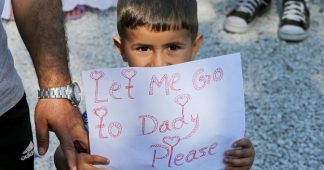19 February 2020
A commission appointed by Unicef and the WHO has produced the report A future for the world’s children?, published by medical journal The Lancet.
40 experts were appointed by the commission to review worldwide health prospects for children and young people.
In the report, 180 countries are ranked by the opportunities with which they provide children for their futures. This includes basic survival, health, education, nutrition, sustainability, justice and inequality.
“It’s time for a new approach to the health of children, a new era in which all governments ensure that the wellbeing of children comes before anything else,” Unicef Norway general secretary Camilla Viken told news bureau NTB.
With regard to the global health of children, Viken noted that, despite huge improvements in general over the last 20 years, development has stagnated and is at risk of being reversed in the worst cases.
“Climate change, dangerous marketing and obesity are some of the newer and greatest threats against our children, threats which were unthinkable a few generations ago,” she said.
No country is free of flaws in all sections of the report, which focuses on how well countries are ensuring health, environment and a secure future for children.
Norway is, though, top of the list for giving children the best possible chance of good health, just ahead of South Korea and the Netherlands. Scandinavian neighbours Denmark and Sweden and 6th and 13th respectively.
But on the question of protecting the climate for future generations, Norway is to be found on the lower reaches of the ranking, in 156th place. Interestingly South Korea and the Netherlands also perform poorly in this category, at 166th and 160th respectively.
Norway emits 212 percent more CO2 per person of the 2030 climate target, a key reason for its low ranking. Denmark emits 122 percent of the target, putting it 135th, and Sweden is 55 percent over, corresponding to 116th place.
Another key element of the report is the potential impact of poor diets on the health of children. Heavy marketing of unhealthy products, targeted at children, is linked by the commission to increasing levels of obesity in children globally.
In 2016, 124 million children worldwide were obese, compared to 11 million in 1975, according to the report – an eleven-fold increase.
A Unicef report from last year placed Norway amongst countries with increasing incidence of obesity in children, NTB writes.
Published at www.thelocal.no











